#because since she's a jedi i wanted the colors to reflect a different character journey for her
Explore tagged Tumblr posts
Text
i did some art for the lifeswap au~~~

please click for better quality so you can read my stupid captions cause they made me laugh really hard when i was drawing this
#fun fact if you look closely at sabine's 'sunset' hair you can see her padawan braids!!#it was so fun coming up with sabine's different hair colors here though#because since she's a jedi i wanted the colors to reflect a different character journey for her#oh yeah and that reputation era joke started when makenna suggested i give sabine an Edgy Tattoo and I suggested a snake#and then kenna started singing look what you made me do#and i was like PFF ITS HER REPUTATION ERA#btw everyone who draws should check out adorkastock for their pose reference pictures!!!#twin blades and beskar au#star wars rebels#sabezra#kanera#jessica's art
134 notes
·
View notes
Text
Dean DeBlois Talks the Care and Feeding of Flying Reptiles
The writer-director of DreamWorks Animation’s Oscar-nominated ‘How to Train Your Dragon: The Hidden World’ reflects on his long and loving journey creating the epic animated trilogy.
By Jon Hofferman and Dan Sarto | Tuesday, January 28, 2020 at 11:29am
In 3D, Awards, CG, Films, People, Virtual Reality, Visual Effects | ANIMATIONWorld | Geographic Region: All
Oscar and Annie Award-nominated ‘How to Train Your Dragon: The Hidden World,’ the final chapter in DreamWorks Animation’s epic animated feature trilogy, written and directed by Dean DeBlois. Images © 2019 DreamWorks Animation LLC. All Rights Reserved.
At this point, neither the How to Train Your Dragon animated feature film franchise, nor its longtime writer-director Dean DeBlois, needs much of an introduction. The epic adventure series, which debuted in 2010, has been both commercially successful and critically acclaimed, with the first two installments garnering an immense number of Annie Award nominations and wins, as well as being Oscar, BAFTA and Golden Globe nominees for Best Animated Feature. (How to Train Your Dragon 2 won the Golden Globe in that category in 2015.)
This time is no different: How to Train Your Dragon: The Hidden World has been nominated for an Academy Award and eight Annie Awards, including Best Animated Feature, and has won accolades from the National Board of Review, the Society of Voice Arts & Sciences, and the Hollywood Music in Media Awards, among others. Produced by Brad Lewis and Bonnie Arnold, The Hidden World delivers a heartwarming message about overcoming intolerance wrapped inside a tale about growing up, facing the unknown, and learning to let go. It also answers the burning question of what happened to the dragons that once populated the earth and lived in cooperation with humans.
So, as awards season rounds into the home stretch, and DeBlois faces his third round of Dragon-mania, it seemed like a good time to talk with him about this reptilian saga that’s become such a central part of his life.
AWN: In a presentation that you gave at the VIEW conference in October, you said that in general, you’re not very enthusiastic about sequels because, if you've done a good job, your story is told, and a follow-up can feel like an unnecessary add-on. What about How to Train Your Dragon made you feel that it provided an opportunity to do sequels the way they should be done?
Dean DeBlois: Well, I think it was a combination of three things. One is that I was a Star Wars kid and I loved the expansiveness of The Empire Strikes Back and Return of the Jedi. I felt they took characters that I loved, expanded their worlds and increased the adventure, the peril. The characters were kind of maturing and growing up, and it had a big impact on me. And I saw in the Dragon world and its cast of characters the potential to do something similar. The world could be expansive, and we could grow up with the characters. In the time that it takes to make an animated movie, our fan base could be aging with the characters, which wasn't really something that I'd seen done before – where you take a cast of friends and then grow up with them. We would leap five years into the future and find a new organic problem that felt important and universal. So, that was part of it.
Then, I think it's also the conversation that I had with [Dragon books author] Cressida Cowell. Even though the narratives are quite different in the films and the books, I loved the idea that she was taking on this challenge of explaining what happened to dragons and why they aren't here anymore. I thought that was really intriguing, but also kind of gripping and emotional. The opening line of her very first book is, "There were dragons when I was a boy." That suggests they're gone. What happened to them? So, I loved taking on that challenge.
Finally, just being able to explain certain mysteries that were inherent in the first film. What happened to Hiccup’s mother? Is Toothless the last of his kind? If so, why? Just the idea that we might be able to take organic questions that we didn't have time to explain in the first movie, or didn't feel the need to, and make them into important questions in the context of the trilogy. As if we'd gone back in time and planted them there.
AWN: The emotional center of the storytelling in the films is the growth of the characters, their becoming adults and taking on adult responsibilities, even though they're still young. That’s really the best part of the films.
DeBlois: Yeah, it felt organic to me because I was thinking about what problem I could graft onto 15-year-old Hiccup that felt important. He now has his father’s love and admiration, he has the respect of the town, he has the attention of the girl he was secretly pining for, he has an amazing dragon that he could fly around on, and he ended an age-old war. It doesn't feel like a character who could have a problem until something really eventful enters his life. We needed to go to another rite of passage, which just naturally led to a 19-year-old in search of himself, when you've got two domineering parents of contrasting philosophies. A character who's on the run from his destiny at home, only to return to it with a renewed sense of self, was an appealing tale to me.
AWN: There's a large number of characters in the films, and they play pretty central roles. How do you ensure that you give them enough screen time and develop them enough so it feels that they really belong and have a reason for being there?
DeBlois: It's really tough and I don't know that we did, to be honest. I think that a lot of our characters are underserved. If we had a longer movie, if we could make a 120-minute movie instead of a 90-minute movie, we might be able to explore them more. But oftentimes the characters do become support characters. We do our best to give them moments, give them a laugh here and there, or give them a starring turn. But when you have an unwieldy group of characters, it’s really tough because you're always fighting the ticking clock of budget and time.
AWN: Speaking of characters, what makes a good villain and how do you determine how villainous to make your villain?
DeBlois: That is a very good question and I don't know that I have a very good answer. I struggle with villains. I find them boring if they just want power or money. Unless there's a bit of empathy in their desire, it just falls flat for me. Drago was meant to be a really interesting villain in How to Train Your Dragon 2. There was going to be a sea story that followed his survival and how he became marooned on an island that was home to a very aggressive dragon. He had to befriend this thing in order to fly off the island and get back to his armada. It was a very touch-and-go relationship because they were both very headstrong, but in the end, they established a mutual trust, and it changed him. Even with all of his heinous crimes, when he arrived in the third-act battle, he took the side of the dragon riders, fighting his own former cohorts. I liked that idea because it took what was admittedly a one-dimensional character and gave him complexity. But we didn't get to do that because, again, taking the time to do that story properly would have compromised Hiccup’s story. I regret it since I really wanted to do something interesting with that character.
We channeled some of that frustration into the development of Grimmel [in The Hidden World] and making him a villain for the times – an intolerant elitist who’s trying to crush blossoming ideas of peaceful coexistence. But he’s also a character who’s fun to watch onscreen – he has a kind of playful sensibility and likes the sound of his own voice. Enjoys the hunt, enjoys cornering his prey and forcing it to make desperate decisions. He’s a character without empathy, but he has a sense of humor.
Dean DeBlois.
AWN: To turn to the production side, did you use any virtual camera work or any tools that helped you visualize how you wanted to shoot this?
DeBlois: Yes, [cinematographer] Gil Zimmerman and his team – the layout team who provided us all the previs and the final layout of the movie – would go down to our mocap stage and pull up rough versions of our sets and don the outfits with the little ping-pong balls and actually work out a lot of their own choreography. So, if it wasn't a flight scene, if it was something that had a physical space where they could really block for action, they would come up with ideas that way. It's always dispensed with when it gets to animation, but the ideas are there and then the animators start from scratch.
AWN: How extensive was the previs? Were you using it more for storytelling or was it used more for camera and layout?
DeBlois: On this film, we started to invite the layout department into the storytelling. In other words, if there was a sequence that depended on visceral, kinetic movement – something that's hard to suggest on drawn storyboards – we would talk out the beats of the script pages with Gil Zimmerman and the assigned previs artists, and they would go off and develop it. If we knew there was going to be flight involved or some kind of complex set, we would either hand the sequence entirely to the previs artists or involve them really early.
I found I really liked this step and how far it has come in recent years, where so much of the finished idea can be represented quite clearly and closely in the previs. It used to be awkward to look at – characters that would slide across floors, and blank expressions, and robotic movements. It’s come such a long way that it’s something you can include in test previews with audiences, because it's full of color and it has lighting… it’s a very exciting new tool to use.
AWN: Like many top animation directors, you're going to be moving over into the live-action world. Have you always wanted to go this route? You've been directing animated films for a long time.
DeBlois: Yeah, after Lilo and Stitch, I took a look at my personal hopper of ideas that I was working on and I would say three-quarters of them were live-action. They felt like live-action films. I decided to go out there and just see if anyone was interested. I sold three of them. It got close with a start date on one of them, but they all kind of went on ice when there were administrative changes both at Disney and Universal. It was an exciting and frustrating period and it just feels like an itch that I didn't scratch. So now I have that opportunity to return to the world of live-action and hopefully get a movie going. I do so with caution because I know that so many things can fall apart very quickly in live-action, whereas in animation we tend to commit to the idea of making the movie, even if you have to change out people in the process.
AWN: Do you feel that your experience in animation gives you specific skills that you can apply in live-action production?
DeBlois: I think my storyboarding background definitely gives me the ability to communicate ideas clearly and visually represent them. Having spent so much time on the story side of things, writing as well, I feel as though I can clearly communicate the story we're telling and engage other people in contributing ideas and making it better. I think in any sort of filmmaking enterprise you need somebody who's going to be the guardian of the story, but still be open to great ideas, and I feel like I've been honing that skill over the years.
AWN: Last question. How does it feel to say goodbye to dragon world – after three really well-done, well-received, expansive, beautifully animated features? You completed the trilogy, you told the story as well as it could be told. What are your thoughts looking back on this huge body of work?
DeBlois: I'm very proud that we were able to reach the goal that we had set for ourselves, that we didn't have to creatively compromise much, and that we did it with largely the same team over the course of a decade. It's bittersweet because not only have we come to love the characters and the world, but we really like working together. We don't know if we're ever going to be arranged as that crew again. People have gone on to different shows, some have left the studio. It was a bit of a gamble to dedicate so much time to a trilogy, especially in the ever-changing landscape of studios. There were five changes in leadership on Dragon 3 alone. With every person that comes in, they have their own sensibility and their own tastes. And so, learning to work with each person and also giving them ownership can be tricky. Luckily, we were able to keep our North Star in sight and deliver the ending that we wanted.
22 notes
·
View notes
Text
One of the exercises in Julia Cameron’s The Vein of Gold is to compile a list of favorite movies--or ones with images that resonate with you--and note any patterns that arise. Here are some of mine, with observations below.
(For the purposes of this exercise, I’m sticking with live-action films, but there’s no reason why there couldn’t be animated films.)
1. Star Wars Original Trilogy (Star Wars, The Empire Strikes Back, Return of the Jedi)
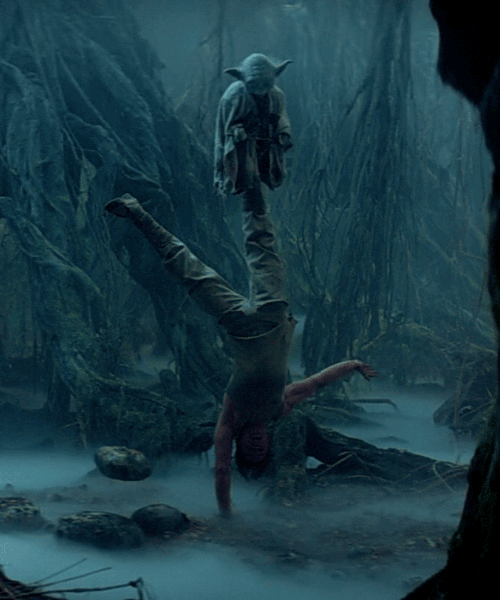
(Yes, I know this is technically three films, with three different directors and independent histories, but I didn’t feel like listing them all separately.)
2. The Lord of the Rings: The Fellowship of the Ring
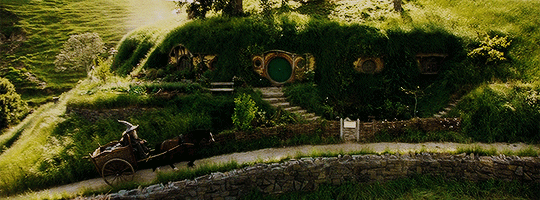
Ironically, I love the first Peter Jackson movie, but not any of the subsequent ones. Which is not to say they’re necessarily bad movies, but they’re not the ones I’d want on endless loop. (Part of this is because The Two Towers and The Return of the King are essentially war movies, and also because I have to watch Faramir act OOC, which hurts my soul.)
3. The Secret Garden
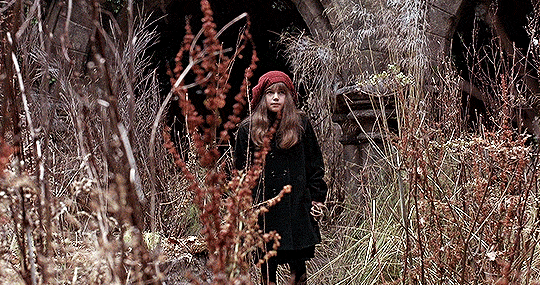
4. The Matrix
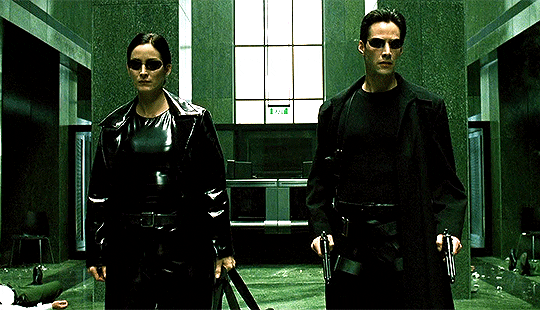
I actually don’t have strong feelings about Reloaded and Revolutions--like, the actual plot is weird, but I am so not watching these films for plot.
5. Return to Oz
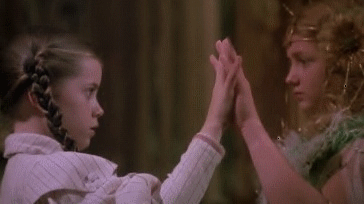
6. Inception
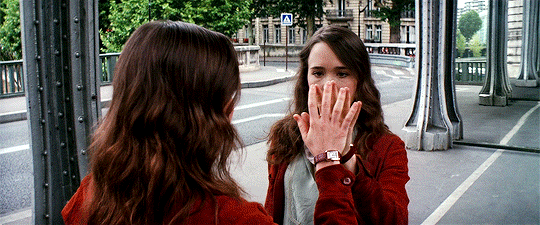
7. Labyrinth
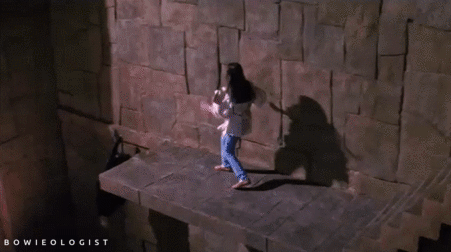
8. The Terminator

Don’t get me wrong, Terminator 2 has a lot going for it, but it’s not the one that I can’t stop thinking about (except for that one deleted scene with Michael Biehn, which is a totally different story).
Thoughts and Themes:
So at first glance, it seems like I have two separate categories: ‘80s and ‘90s-’00s films. Or maybe it’s sci-fi and fantasy? The Secret Garden is the only one that even approaches some kind of realism, and even that is a pastoral kind of world that would not be out of place in the more peaceful parts of, say, Middle-Earth (especially Fourth Age). How about high-tech vs. low-tech, or cyberpunk vs. fairy tale? Or, even better, what about reality vs. illusion (or story vs. truth if you prefer)--which is also a major tension within every film on this list?
I’ll also note that most of these films have an epic color palette, with memorable landscapes that either serve as characters in and of themselves, or symbolize the mental states of various characters. These films are beautiful works of art, reveling in The Aesthetic, whether that’s the idyllic peacefulness of the Shire or the grimy back alleys of 1980s Los Angeles.
The thing that really got me when I laid it out like this--the thing I hadn’t noticed before--was that all of these involve a (sometimes literal) rebirth, transition, or journey from darkness to light (or light to darkness to light again, depending on the work). You could also substitute life and death here, and not change much.
This is, again, often quite literal: Sarah moves underground in Labyrinth, the Fellowship descends into the Mines of Moria, the secret garden comes to life with the spring, Dorothy confronts the Nome King in his underground lair. Neo wakes up to find himself naked and soaked to the skin, and flushed down the tubes like garbage, in a literal hellscape where the machines destroyed the sun (a motif that also appears in Terminator’s dystopian future), then literally dies and is resurrected at the end of the film. Luke goes underground to confront his own double--another recurring theme!--on Dagobah.
Duality and the exploration of one’s soul through another world is HUGE big theme--or, to put it another way, The internal mirrors the external. This is a huge motif of Inception, which is a literal inward journey into a character’s psyche; and you could also make the argument that both Return to Oz and Labyrinth cover similar territory. Is Oz real, or is it in Dorothy’s head? Is Ozma a part of her, or is Ozma a separate entity? Is Jareth a real foe or is he the embodiment of Sarah’s fears and desires, a fantasy she concocts based on a story in a book? And Frodo realizes he’s not so different from Gollum, that the sad shriveled creature is what he could become if he fails at his task--and, ironically, his kindness to Gollum is what allows the quest to succeed when Frodo finally succumbs to temptation.
Frodo in the The Fellowship of the Ring sees the world differently when he wears the One Ring, and it’s terrifying. Sarah Connor realizes that she’s left her ordinary world behind and crossed into Kyle and the Terminator’s reality in a moving speech, and The Matrix doesn’t even try to be subtle. Even The Secret Garden uses the eponymous garden as a metaphor for the blossoming of Mary’s own soul, and the souls of those around her (especially her uncle and cousin, but also Ben Weatherstaff).
These stories are also concerned with ecology, though it’s usually a background motif, since the main focus is on saving the world (or what’s left of it, i.e, humans). The Shire is paradise; Mordor is a desolate hellscape, dominated by a giant volcano. Kyle Reese breaks down over the beauty of the world, and Mary Lennox seeks to bring the lost garden back to life. Dorothy retreats elsewhere after the grey grimness of Kansas/the mental hospital.
There’s also a real tension concerning humans’ relationship to technology in these films. The Matrix is an illusion, and machines control the earth. Or the machines don’t even bother farming humans and aim to kill ‘em all. Saruman literally transforms Isengard from a tree-lined field to an industrial hellscape. The mental institution uses that freaky electrical machine on Dorothy. Star Wars is more accepting of droids and technology, but even there, there’s tension: Obi-wan calls Darth Vader “more machine than man,” and it’s not a compliment; the Death Star is built to obliterate entire planets and must be stopped twice.
I’d argue this theme goes deeper than human/tech--it’s really human/other, with technology providing one kind of other. There’s human-alien interactions in Star Wars and Labyrinth, not to mention Mary’s relationship with the robin in The Secret Garden, Dorothy’s friendship with Jack Pumpkinhead and the Gump. On a less friendly note, Frodo’s relationship with Gollum is the emotional crux of the Lord of the Rings.
These films also feature the classic hero’s journey, but often through a female lens. The protagonist usually has no special skills other than their strong moral character and determination--or even if they do have skills (like Ariadne*), they still serve as an audience surrogate or substitute, a stranger to the new worlds they visit. The protagonist has at least one faithful friend/companion/love interest to help them (sometimes even a team/found family), and often a mentor as well (who may or may not be a crusty eccentric). In the end, the characters must take control of their own destiny--Frodo chooses to leave the Fellowship, Luke throws away his lightsaber rather than kill his father, Sarah declares to Jareth “You have no power over me”. Sarah Connor yells, “On your feet, soldier!” and keeps going to the bitter end, and Mary Lennox is unafraid of her bratty cousin’s wrath and puts a stop to it when everyone else enables him.
*(As an aside, I know Ariadne’s not the main character in Inception, but I find the actual main character way less interesting, so she’s the one I focus on, just like I find Trinity far more compelling than Neo.)
Characters often have Meaningful Names: Morpheus, Trinity, Neo; Ariadne; Luke Skywalker, Han Solo. These films also feature a question of fate and inevitability - Luke has precognitive visions, Neo consults the Oracle, Sarah is told “there is no fate but what we make for ourselves,” with Kyle serving as an oracle of sorts with messages from the future to come. The Mirror of Galadriel shows possible futures for the Shire, too.
Another theme is that the protagonist must suffer and/or work hard for their transformation. Mary has to do the actual work of gardening; Luke has to sweat and do handstands (beautifully, I might add); Frodo has to walk to Mount Doom; Sarah has to walk the labyrinth, and Sarah Connor has to survive a fucking nightmare. Dorothy has to rescue the royal family of Ev and free Ozma; Ariadne has to design a dream-puzzle for the heist to work. Even Neo has to train with Morpheus--though he’s able to use cheat codes to download martial arts directly into his brain without having to sweat for it; his real journey is in self-confidence.
In keeping with the stunning visuals, impossible feats are regularly featured, and excellent, cutting-edge-for-their-time special effects are prominent. Many also feature stunning fight scenes--the classic Luke vs. Vader duel on Cloud City; the “I know Kung fu” sequence in The Matrix; the clashes in The Fellowship of the Ring. Jareth has some excellent moves in Labyrinth, too, although he’s more inclined to dance than traditional battles.
I couldn’t resist contrasting my favorite moment in Return to Oz--rescuing Ozma from the mirror prison--with Ariadne shattering her own reflection in Inception, because that is such a moment for me, encapsulating all of the reality/illusion, internal/external, self/other dichotomies I mentioned above. (See also the Mirror of Galadriel above.) Inception and Labyrinth also share the motif of impossible Escher staircases, which I freakin’ adore.
It will probably come as no surprise to note that I also enjoyed films like The Dark Crystal, The Neverending Story, and What Dreams May Come, which tap into similar themes and imagery. You’ll probably be able to guess that The Sword in the Stone is my favorite animated Disney film, too.
I also love a number of Asian films like Hero, House of Flying Daggers, and Crouching Tiger, Hidden Dragon, all of which feature beautiful landscapes and color palettes, stunning fight scenes and special effects, along with a healthy dose of the fantastic, and a focus on story vs. reality (often with a plot twist or surprise reveal at the end). This is unsurprising when you consider the strong debt both Star Wars and The Matrix owe to Asian cinema in terms of style, plot, and aesthetic. In those films, the tension is more society vs. self, but duality is still very strongly present.
If you notice any other patterns or recurring themes, let me know; I’d love to hear them! Also, if you can think of any other movies I might enjoy based on this, let me know.
4 notes
·
View notes
Text
The Rise of Rose | How A Badass Nerd Became The New “Star Wars” Lead
Kelly Marie Tran is ready to conquer galaxies both near and far, far away. — Buzzfeed News

Two years ago, all of Kelly Marie Tran’s dreams came true: She got the career break of a lifetime and landed the new lead role of Rose Tico in Star Wars: The Last Jedi, she moved to London and got to work with some of her personal heroes (Lucasfilm President Kathleen Kennedy and actor Laura Dern, for starters), and she finally paid off her student loans. And then, once filming wrapped, she ran away.
“I think anytime you go into anything that’s different and new, there’s a bit of fear,” the 28-year-old Vietnamese-American actor said on a sunny October morning, fanny pack bouncing as she hiked Griffith Park in Los Angeles. She glanced down quickly at her Pikachu watch.
“That’s just natural. It’s a human, natural instinct,” she said. “But I also spent a year traveling and a year trying to figure myself out and reminding myself why I got into this.”
Originating a Star Wars lead character is the stuff of dreams for actors. It all but guarantees immediate global stardom (The Force Awakens breakout stars Daisy Ridley and John Boyega are currently starring in big-budget studio films outside of Star Wars), and also offers the possibility of long-term employment (Harrison Ford has been playing Han Solo since 1977, and he’s still not entirely sure if he’s finished). Even in the face of rapid and continued expansion — Disney recently announced that Last Jedi writer and director Rian Johnson will helm a new film trilogy — Star Wars remains one of the most surefire celebrity-making machines in show business.
But becoming a Star Wars star is also a huge responsibility. It’s a central juggernaut in the geek-culture landscape, and the fandom is so longstanding and voracious, a prominent role in a Star Wars film can guide, and often define, an actor’s entire career — especially a newcomer with hardly any mainstream projects under their belt. And for Tran, there’s an added element of both privilege and pressure: Rose Tico is the franchise’s first major character to be played by an Asian-American woman.
The movie isn’t even out yet, but Tran is already making history with the role. By posing as Rose on the front of Vanity Fair in May, arms crossed and a coy smile on her face, Tran became the first Asian-American woman to appear on the magazine’s cover. And she clearly understands how important that representation is to fans — it’s not something she takes lightly.
“It’s something that I think about a lot,” she said. “I just remember growing up and not seeing anyone that looked like me in movies.”
Tran’s no stranger to the geeky realm. She nicknamed one of the steepest trails in Griffith Park “the road to Mordor,” and has been unsuccessfully trying to convince eight friends to dress up as the Fellowship of the Ring with her since high school. She’s super nervous for Daenerys to see Viserion on Game of Thrones next season (“That’s such a Kylo situation, right? Seeing your child who’s on the other side now? I’m serious”). She’s a Harry Potter superfan, and even though she’s a Ravenclaw per the Pottermore Sorting Hat, she’s a Gryffindor by choice: “I feel like the Sorting Hat would have been like, ‘You should pick.’ And I would have picked Gryffindor.”
But Tran’s also no stranger to the lack of diversity in nerdy fare. For example, she always went to midnight Harry Potter screenings dressed as Cho Chang, the only prominent female Asian character in the films, even though she adored Luna Lovegood. And now that Tran’s about to experience the other side of fandom and become one of those rare characters of color herself, she admits there’s no lack of pressure.
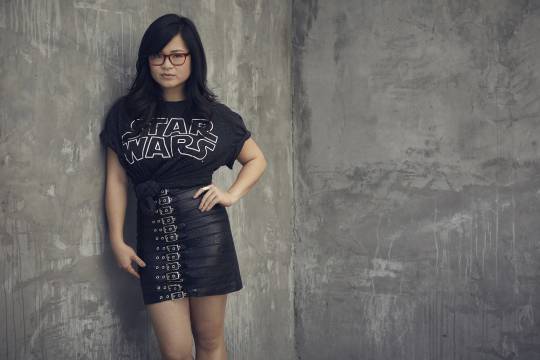
“It feels like a lot of expectation, and you just wanna do it right,” she said, pumping her bright green dinosaur leggings up the road to Mordor.
That expectation, that pressure, is part of the reason why Tran spent the year after filming wrapped traveling in total anonymity.
“I ran away!” she laughed. “I wanted to center myself and remember who I was. My life had just changed so much, and I needed that time to reflect.”
First, she went to South Africa and worked on an endangered wildlife reserve (no internet, no electricity, no running water). She shared a room with a dozen people and told everyone she worked as an office temp. (She didn’t start getting inquisitive emails until the new Rose Tico toys started coming out.)
Next, Tran went to Vietnam, first to work with orphans, and then to revisit her roots. Her parents fled to the United States during the Vietnam War, so she brought them back to their home country for the first time in 40 years.
“I have very huge cultural ties to where I’m from and where my family’s from,” she said.
Her time in Vietnam was, according to the actor, an “overwhelming experience.” She and her family biked to her dad’s village together, and he showed her where he used to sleep.
“My dad was a street kid for seven years — he was homeless,” Tran said. She met her cousins, the children of relatives who tried to escape during the war but were pulled back by the Vietnamese government. “I could have had this life,” Tran said, holding out one hand, “and now I have this one, and it’s purely because my parents dropped everything and moved to a country where they didn’t know the language [and] didn’t have any opportunities. I very much have felt this whole time that I’ve been living for multiple generations of life.”
That year of travel and soul-searching seemed to help Tran achieve what she had set out to: She remembered why she became an actor.
“My parents didn’t get to have a dream,” she said. “Their dream was to live in a country where their kids would have choice.” And despite any hesitance on her parents’ part regarding her risky career choice, Tran always saw it differently.
“I truly did feel that I owed it to my parents, my grandparents, to do whatever it was that I wanted, because if I wasn’t happy, if I wasn’t being true to myself, then I wasn’t living fully,” she said. “They had given up so much so that I could live at the level that so many people are just automatically born into.”

But just two short years ago, Tran’s acting career looked very different. In 2015, she was working full-time as an assistant at a creative recruiting firm in Century City to pay off her student loans and make ends meet. She’d wake up at 5 a.m., answer phones and grab coffee, leave for two or three auditions in the afternoon, then come back to the office and stay until 8 or 9 at night.
It took Tran years just to get an agent. She started sending inquiry letters to agencies when she was a high schooler back in San Diego. She worked at a yogurt shop and saved up all her money for headshots, only to receive a slew of rejection letters. “There’s no rule book, nobody tells you how to do it,” Tran sighed. “It was sort of the preparation for the next 10 years. I still have a bunch of rejection letters from agencies that did not want me.” She’s strongly considering framing them.
Tran finally landed a commercial agent in 2011, and a theatrical agent two years later. Her commercial agent suggested she try an improv class to give her resumé some extra shine, so she enrolled at the Upright Citizens Brigade Training Center in Los Angeles — and fell in love.
“I love the ideals of improv: supporting each other and never being sort of judgmental of other people’s ideas,” she said. “I think they’re great rules for life: You get a piece of information, you’re like, ‘OK, how do I work with that and how do I add to that?’”
Her creative circle flourished, and she cultivated a tight-knit group of writing partners and performers, including her all-female Asian improv group, Number One Son.
“I’ve always been very much a team person,” Tran said. “Acting seems like solo work, but it’s not. This is not a one-person journey, at all.” But as much artistic fulfillment as she was finding, her resumé still consisted largely of CollegeHumor videos and small TV roles. She couldn’t even get an audition for a movie.
When she turned 25, Tran resigned herself to a fate of personal fulfillment without mainstream success. “I remember making a conscious decision,” she said. “I never thought that I would accomplish my dreams. I believed in myself, but when I turned 25, I just thought, Oh, I’ll just be working my day job and auditioning and struggling financially, but I’ll be living my dream for the next two or three decades.”
Then, as all great success stories go, she got the audition notice. The Untitled Rian Johnson Project was supposed to be a secret, but everyone knew it was for Star Wars. (Johnson had already been announced as both writer and director of the next installment.) But Tran, a self-proclaimed nerd on many subjects, had never seen a single Star Wars movie.
“In 10th grade, my teacher was obsessed with [Star Wars] and played it in the background, but I was reading Harry Potter so I wasn’t listening to it,” Tran laughed.
She didn’t watch any of the movies before that first audition — she never thought she’d make it beyond that — a move she believes helped her in the long run.
“I didn’t have this expectation of what I thought this person should be like; I wasn’t trying to model her after someone I’d seen in a movie,” she said.
Tran recalled that the initial character breakdown for Rose Tico was vague — “Something like, ‘Any ethnicity, character-y!’” — so she walked into the first audition wearing a sweater vest and her lucky Ravenclaw tie.
“All these other girls were in tight black and I was like, ‘Oh no! I’ve done this wrong! I’ve done this wrooong!’” she laughed.
By the first callback — Tran wore her lucky tie again, it had gotten her that far — Johnson was already in the room.
She auditioned five times between the summer and fall of 2015, a torturous month spanning between each. After each audition, Tran tried to forget about the possibility of another. She stayed busy writing with friends, and she started journaling for the first time in her life. The final audition took place in London, with full hair, makeup, and costuming.
“And this is why, I’m telling you,” Tran cackled, “the fact that I hadn’t grown up with Star Wars really helped me. I think I would have fallen over.”
But she didn’t fall over. In fact, Tran did the opposite: She stayed unfathomably grounded. “I remember the day of that audition, I just wanted to be present,” she recalled. “I just wanted to have fun, because there was nothing I could do at that point to control getting it or not. I remember having the most freeing feeling, and I had the best time.” Then she went home and tried to forget about it.
Three weeks later, in November 2015, Johnson emailed Tran’s agent and asked to meet with Tran before she went home for Thanksgiving. “I remember every moment,” she said through a grin. “Walking up the stairs, there’s a little bit of small talk, and then Rian says, ‘I want to offer you this role.’” Tran didn’t react; she froze. “What happens when everything you’ve ever wanted comes true?” She hid her face behind her hands at the memory. “I didn’t say a word. I was terrified. It was such an overwhelming shock.” Johnson waited, and then asked, “Umm, do you want this?” Yes, she did.
Tran went home for the holidays, but couldn’t tell anyone she’d just landed the role of a lifetime — all aspects of the movie were being kept top secret. She lied and told her mom, dad, and two sisters that she’d booked an indie film in Canada. She casually suggested the family go see The Force Awakens, but her dad objected. “He goes, ‘Ughhh, I hate movies like that. I don’t know why people go see sci-fi movies,’” Tran laughed. “And I was like, ‘Welp.’”
In January 2016, Tran moved to London to begin filming, and her life changed overnight.
“Someone mistakenly gave me the keys to the kingdom,” she said, her eyes still wide with disbelief even now.
She spent her days on set watching the likes of Benicio del Toro, Andy Serkis, Adam Driver, Oscar Isaac, and Laura Dern (“I can’t believe she knows who I am, ahhh!”) in what she described as “ultimate acting school.” Tran went to set every day, even if she wasn’t filming.
She hung out in the creatures department and learned a lot — she even dressed in a makeshift Porg costume for Halloween this year. She spent weekends watching movies with Mark Hamill and his family. She shared a trainer with Daisy Ridley, and eventually learned how to push a car. (“I’m serious! Little ol’ me.”)
But Tran found herself worrying; this was her first big gig and she was treading very carefully, often worried she might offend someone. Then she met Carrie Fisher.
“What a woman,” Tran nodded pointedly. “The best thing about Carrie that I witnessed was that she was just purely honest. No matter how messy that was, or how complicated that was.”
While Tran agonized over adhering to her trainer’s fitness regimen, Fisher showed up and walked the treadmill, sipping a Coke and smoking a cigarette.
“I don’t know how to explain it — without even protecting me, she was. Just by being herself,” Tran said.
But there was one caveat to all of her dreams seemingly coming true: Tran wasn’t used to living without her established support system.
“I was scared, I was alone, I couldn’t tell anyone what I was doing,” she said. “I remember crying because I wanted my friends to experience it.”
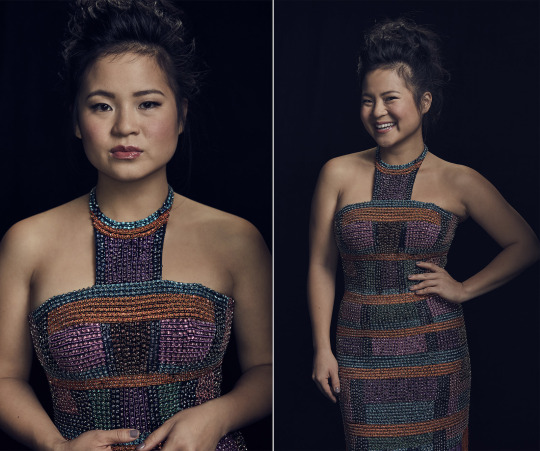
To combat the isolation, she joined an improv class in London, kept journaling (“I have 25 journals now that’s just me and my feelings on paper”), and leaned heavily on her castmates, especially John Boyega — the actor she’ll likely be sharing the most screentime with in The Last Jedi.
Her close association with Boyega’s character, Finn, is one of the few facts we know about Rose Tico so far. We also know she’s a low-ranking mechanic in the Resistance, and her sister Paige (played by Vietnamese actor Veronica Ngo) is a gunner in the Resistance.
“John is someone who I feel like I immediately was able to mesh with,” Tran said of working with the actor. “We connect on different levels because our parents are immigrants, we’re both people of color, nerds, and he’s just hilarious.” Tran, of course, knows everything about Rose, but all she’ll coyly add is that the character “has an interesting relationship with war” — a relationship Tran’s family knows all too well.
“I dug into that with my parents, and their relationship with war because of the Vietnam War,” she said. She also listened to podcasts and read books on engineers and how they think, and infused much of her own personality into the character’s.

“Sometimes I think Kelly informed Rose, and sometimes I think Rose informed me,” Tran said. “It’s such a messy, tangled relationship, which I think is kind of beautiful. She’s always going to be part of me and I’m always going to be part of her, right?”
And as for Rose’s future in the Star Wars universe, Tran is as curious as the rest of us. “I don’t know,” she said earnestly, convincingly, like a true Gryffindor.
Since filming wrapped, Tran’s co-stars moved on to new projects — “They’re all working on a bunch of movies everywhere in the world. I’m the only who’s like, ‘Yooo, come over, let’s watch a movie!’” — and she’s been living in a strange bubble, treading water between anonymity and the global stardom that Star Wars all but guarantees.
“Everything feels very emotional right now, because it feels like the first or the last time,” Tran said slowly, measuring her words. “I don’t know what that other life is gonna be like, but I also don’t want to let go of being this anonymous person who gets to live in both lands.”
There’s no way to know what her life will look like after The Last Jedi premieres, but Kelly Marie Tran is finally ready to stop running away from the inevitable spotlight.
“The only thing I can do is be honest and be myself, and if people hate that, they’re gonna hate that, and I can’t control that. It has nothing to do with me,” she said, half-sighing. “I’m saying this now, and it sounds really easy, but it took me a year. I just feel like I don’t wanna hide anymore.”
— Buzzfeed News
179 notes
·
View notes